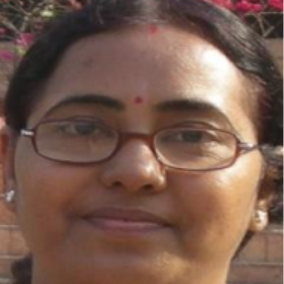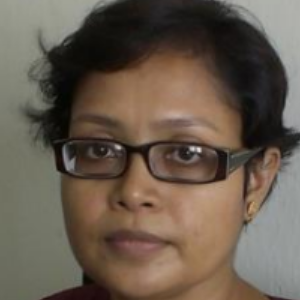International Journal of Modern Education and Computer Science (IJMECS)
IJMECS Vol. 8, No. 2, 8 Feb. 2016
Cover page and Table of Contents: PDF (size: 1059KB)
Error Measurement & its Impact on Bilateral - Canny Edge Detector-A Hybrid Filter
Full Text (PDF, 1059KB), PP.30-41
Views: 0 Downloads: 0
Author(s)
Index Terms
Bilateral Filter, Canny Edge Detector, Pratt Figure of Merit, Ems
Abstract
Image Processing, a subset of Computer Vision, is an important branch in modern technology. Edge detection is a subset of segmentation to detect object of interest. Different image edge detection filters and their evaluating parameters are introducing rapidly. But the performance of an edge detector is an open problem. In this paper different performance measures of edge detection have been discussed in details and their application on a hybrid filter using Bilateral and Canny is proposed. Its parametric performance has been evaluated and other well established or classical existing edge detecting filters have been compared with it to measure its efficiency.
Cite This Paper
Sangita Roy, Sheli Sinha Chaudhuri, "Error Measurement & its Impact on Bilateral -Canny Edge Detector-A Hybrid Filter", International Journal of Modern Education and Computer Science(IJMECS), Vol.8, No.2, pp.30-41, 2016. DOI:10.5815/ijmecs.2016.02.04
Reference
[1]H. Nachlieli, D. Shaked, Measuring the quality of quality measures, IEEE Transactions on Image Processing 20 (1) (2011) 76–87.
[2]M. Heath, S. Sarkar, T. Sanocki, K. Bowyer, A robust visual method for assessing the relative performance of edge-detection algorithms, IEEE Transactions on Pattern Analysis and Machine Intelligence 19 (12) (1997) 1338–1359.
[3]M.Heath, S.Sarkar, T.Sanocki, K.Bowyer, Comparison of edge detectors—a Methodology and initial study, Computer Vision and Image Understanding 69 (1) (1998)38–54.
[4]L. Van Vliet, I. Young, A nonlinear Laplace operator as edge detector in noisy images, Computer Vision Graphics and Image Processing 45 (2) (1989) 167–195.
[5]C. Lopez-Molina, B. De Baets, H. Bustince, Quantitative error measures for edge detection, Pattern Recognition 46 (2013) 1125–1139.
[6]S Roy, S S Chaudhuri, Performance Improvement of Bilateral Filter using Canny Edge Detection-A Hybrid Filter.
[7]R.M. Haralick, Digital step edges from zero crossing of second directional derivatives, IEEE Transactions on Pattern Analysis and Machine Intelligence 6 (1) (1984) 58–68.
[8]S. Coleman, B. Scotney, S. Suganthan, Edge detecting for range data using Laplacian operators, IEEE Transactions on Image Processing 19 (11) (2010) 2814–2824.
[9]H. Tan, S. Gelfand, E. Delp, A cost minimization approach to edge detection using simulated annealing, IEEE Transactions on Pattern Analysis and Machine Intelligence 14 (1) (1992) 3–18.
[10]M. Shin, D. Goldgof, K. Bowyer, S. Nikiforou, Comparison of edge detection algorithms using a structure from motion task, IEEE Transactions on Systems, Man, and Cybernetics, Part B: Cybernetics 31 (4) (2001) 589–601.
[11]G. Liu, R.M. Haralick, Optimal matching problem in detection and recognition performance evaluation, Pattern Recognition 35 (10) (2002) 2125–2139.
[12]T. Nguyen, D. Ziou, Contextual and non-contextual performance evaluation of edge detectors, Pattern Recognition Letters 21 (9) (2000) 805–816.
[13]L. Kitchen, A. Rosenfeld, Edge evaluation using local edge coherence, IEEE Transactions on Systems, Man and Cybernetics 11 (9) (1981) 597–605.
[14]S.M. Bhandarkar, Y. Zhang, W.D. Potter, An edge detection technique using genetic algorithm-based optimization, Pattern Recognition 27 (9) (1994) 1159–1180.
[15]M. Gudmundsson, E. El-Kwae, M. Kabuka, Edge detection in medical images using a genetic algorithm, IEEE Transactions on Medical Imaging 17 (3) (1998) 469–474.
[16]M. Kass, A.P. Witkin, D. Terzopoulos, Snakes: active contour models, Inter- national Journal of Computer Vision 4 (1988) 321–331.
[17]V. Caselles, F. Catte´, T. Coll, F. Dibos, A geometric model for active contours in image processing, Numerische Mathematik 66 (1993) 1–31.
[18]T. Chan, L. Vese, Active contours without edges, IEEE Transactions on Image Processing 10 (2) (2001) 266–277.
[19]M Basu, Gaussian based edge detection methods- a survey, IEEE Transactions on Systems, Man, and Cybernetics, Part C: Applications and Reviews 32(3) (2002) 252-260.
[20]G. Papari, N. Petkov, Edge and line oriented contour detection: state of the art, Image and Vision Computing 29 (2–3) (2011) 79–103.
[21]J. Fram, E.S. Deutsch, Quantitative evaluation of edge detection algorithms and their comparison with human performance, IEEE Transactions on Computers C 24 (6) (1975) 616–628.
[22]J. Canny, Finding edges and lines in images, Technical Report, Massachusetts Institute of Technology, Cambridge, MA, USA, 1983.
[23]J. Canny, A computational approach to edge detection, IEEE Transactions on Pattern Analysis and Machine Intelligence 8 (6) (1986) 679–698.
[24]Volker Aurich, Jörg Weule, Non-Linear Gaussian Filters Performing Edge Preserving Diffusion, Springer-Verlag Berlin Heidelberg.
[25]S M Smith, J M Brady, “SUSAN- A New Approach to Low Level Image Processing, International Journal of Computer Vision, V-23(1), 45-78, 1997.Springer, DOI:10.1023/A:1007963824710.
[26]C Tomasi, R Manduchi, Billateral Filtering for Gray and Color Image, Proceedings of IEEE International Conference of Computer Vision, Bombay, India, 1998.
[27]N.V. Chawla, N. Japkowicz, P. Drive, Editorial: special issue on learning from imbalanced data sets, ACM SIGKDD Explorations Newsletter 6 (1) (2004) 1–6.
[28]http://www-users.cs.umn.edu/~kumar/dmbook/ch4.pdf
[29]https://en.wikipedia.org/wiki/Confusion_matrix
[30]K. Bowyer, C. Kranenburg, S. Dougherty, Edge detector evaluation using empirical ROC curves, Computer Vision and Image Understanding 84 (1) (2001) 77–103.
[31]Y. Yitzhaky, E. Peli, A method for objective edge detection evaluation and detector parameter selection, IEEE Transactions on Pattern Analysis and Machine Intelligence 25 (8) (2003) 1027–1033.
[32]T. Fawcett, An introduction to ROC analysis, Pattern Recognition Letters 27 (8) (2006) 861–874.
[33]W. Waegeman, B. De Baets, L. Boullart, ROC analysis in ordinal regression learning, Pattern Recognition Letters 29 (1) (2008) 1–9.
[34]D. Martin, C. Fowlkes, J. Malik, Learning to detect natural image boundaries using local brightness, color, and texture cues, IEEE Transactions on Pattern Analysis and Machine Intelligence 26 (5) (2004) 530–549.
[35]S. Venkatesh, P.L. Rosin, Dynamic threshold determination by local and global edge evaluation, Graphical Models and Image Processing 57 (2) (1995) 146–160.
[36]P.L. Rosin, Edges: saliency measures and automatic thresholding, Machine Vision and Applications 9 (1997) 139–159.
[37]R. Koren, Y. Yitzhaky, Automatic selection of edge detector parameters based on spatial and statistical measures, Computer Vision and Image Under- standing 102 (2) (2006) 204–213.
[38]Y. Yitzhaky, E. Peli, A method for objective edge detection evaluation and detector parameter selection, IEEE Transactions on Pattern Analysis and Machine Intelligence 25 (8) (2003) 1027–1033.
[39]D. Martin, C. Fowlkes, J. Malik, Learning to detect natural image boundaries using local brightness, color, and texture cues, IEEE Transactions on Pattern Analysis and Machine Intelligence 26 (5) (2004) 530–549.
[40]M. Segui Prieto, A. Allen, A similarity metric for edge images, IEEE Transac- tions on Pattern Analysis and Machine Intelligence 25 (10) (2003) 1265–1273.
[41]S Paris, P Kornprobst, J Tumblin, F Durand, A Gentle Introduction to Bilateral Filtering & its applications.
[42]J Chen, S Paris, F Durand, Real-time edge-aware image processing with the bilateral grid, ACM Transaction on Graphics, 26(3), 2007, proceedings of the SIGGRAPH Conference.
[43]W K Pratt, Digital Image Processing, PIKS Inside, 3rd Edition Wiley, 2001.
[44]R C Gonzalez, R E Woods, Digital Image Processing, 3rd Edition, PHI.
[45]J. Fram, E.S. Deutsch, Quantitative evaluation of edge detection algorithms and their comparison with human performance, IEEE Transactions on Computers C 24 (6) (1975) 616–628.
[46]R.C.Jain, T.O.Binford, Ignorance, myopia, and naivete´ in computer vision.

